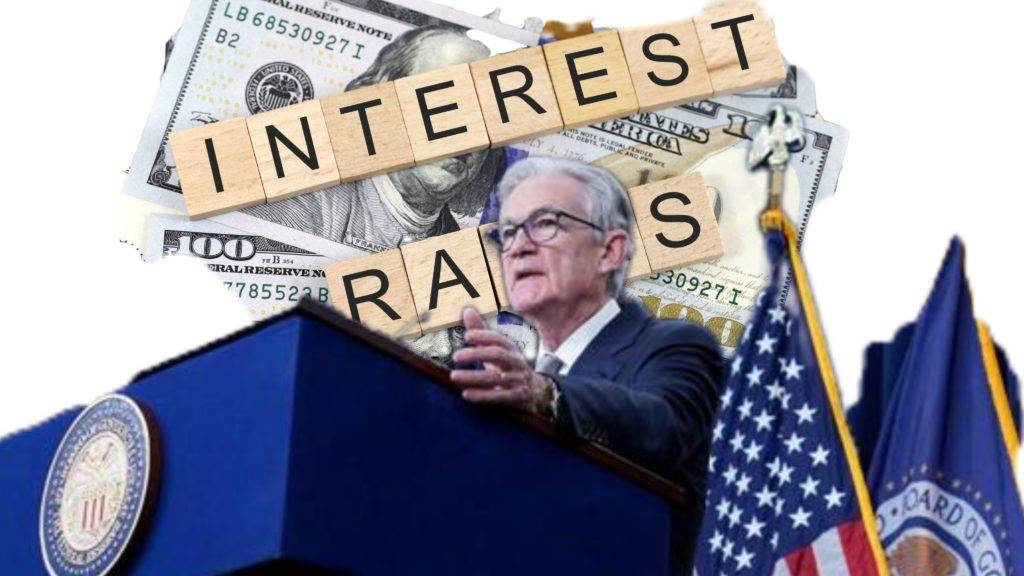A widely anticipated move by financial markets, the Federal Reserve (Fed) opted to keep its key interest rate steady, maintaining a targeted range between 5.25% and 5.5%. This decision, marking the third consecutive hold, was fueled by a combination of easing inflation and a resilient economy. The Federal Open Market Committee, responsible for setting monetary policy, voted unanimously in favor of maintaining the benchmark overnight borrowing rate.
The move comes as a pivotal moment, concluding a cycle of 11 interest rate hikes that pushed the Federal Reserve funds rate to its highest level in over 22 years. The rate hikes, a monetary strategy employed by the Federal Reserve to combat inflation by managing the circulation of excess dollars, have been a significant aspect of the central bank’s recent policy. However, with inflationary pressures showing signs of subsiding and the overall economic outlook holding steady, the FOMC’s decision aligns with their commitment to data-driven policy adjustments.
Additionally, the committee’s forward guidance suggests a potential shift in strategy, with at least three rate cuts anticipated in 2024, albeit in quarter percentage point increments.
Impact on Mortgage Rates as Federal Reserve Decision Ripples Through Markets
The Federal Reserve’s decision to maintain interest rates has already initiated a ripple effect in the housing market, with implications for mortgage rates. Freddie Mac, a public-private agency that plays a pivotal role in the housing market by purchasing mortgages, reported a 30-year mortgage averaging 6.95%. This figure, revealed following the Federal Reserve’s recent decision, indicates a stabilization of rates in response to the central bank’s commitment to stability.

While the Federal Reserve‘s decision to hold rates steady has temporarily mitigated concerns, the anticipation of future rate cuts has introduced a level of uncertainty. The market’s response reflects a delicate balance between the desire for stability and the potential benefits of lower interest rates. Investors and homeowners alike are closely monitoring the evolving situation, with an eye on the Federal Reserve’s new projections indicating the possibility of around three rate cuts in 2024.
The intersection of these factors sets the stage for a dynamic period in the housing market, where the delicate equilibrium between stability and stimulus will play a crucial role in shaping future outcomes.
Federal Reserve Contemplates Further Rate Cuts, Powell-Led Fed Initiates Discussion
Beyond the immediate impact on interest rates and the housing market, the Federal Reserve’s decision opens the door to broader discussions within the central bank. Jerome Powell, leading the Federal Reserve, is at the forefront of deliberations regarding the possibility of further rate cuts. This shift in tone and new projections from Federal Reserve officials point to a potential strategy of around three rate cuts in 2024, a more aggressive stance than initially indicated.
The evolving narrative underscores the Federal Reserve’s commitment to adapt its policies in response to evolving economic conditions. As officials weigh the potential benefits of further rate cuts against the backdrop of a stable yet uncertain economic landscape, the financial markets are poised for continued scrutiny. Powell’s leadership and the committee’s willingness to consider new approaches highlight the central bank’s agility in navigating the complex interplay of economic factors, providing valuable insights for investors, businesses, and the general public alike.
The Federal Reserve‘s Indirect Impact on Mortgage Rates and Housing Market Dynamics
While the Federal Reserve does not have direct control over mortgage rates, its influence on the market is undeniable. Mortgage rates are intricately tied to the 10-year Treasury bond, and these rates are significantly influenced by market expectations regarding the Federal Reserve‘s actions. Investors closely track signals from the central bank, particularly in relation to interest rates, as they play a pivotal role in shaping the financial landscape.

The current housing market presents a unique challenge, with a persistent shortage of houses for sale. This scarcity is further exacerbated by the fact that many existing homeowners are enjoying historically low mortgage rates, some as low as 4%. This situation creates a reluctance among homeowners to sell, as they are understandably hesitant to part with their properties when faced with the prospect of acquiring a new home at today’s higher interest rates. The intricate dance between the Federal Reserve’s influence on rates and the psychology of homeowners underscores the complexity of the current real estate landscape.
Potential Impacts of Interest Rate Reduction on Mortgage Origination Market
Michele Raneri, Vice President of U.S. Research and Consulting at TransUnion, sheds light on the potential consequences of a reduction in interest rates. While the Federal Reserve is contemplating its stance on rates, Raneri points out that such a move could have a dual impact. Firstly, it could serve as a stimulus for the mortgage origination market, injecting momentum into a sector that plays a crucial role in the broader economy. Secondly, a reduction in interest rates could present an opportunity for millions of consumers burdened by high-interest mortgages to refinance.
Refinancing, made more attractive by lower interest rates, holds the promise of significant relief for homeowners, leading to tangible impacts on their monthly budgets. Raneri’s insights highlight the interconnectedness of monetary policy and individual financial well-being. As the Federal Reserve considers its next steps, the potential ripple effects on the housing market and the broader economy underscore the importance of a nuanced understanding of these dynamics for homeowners, prospective buyers, and market participants alike. This delicate balance between the Federal Reserve’s actions and market reactions will continue to shape the trajectory of the real estate landscape in the coming months.
Table of Contents
Discover more from OGM News NG
Subscribe to get the latest posts sent to your email.














